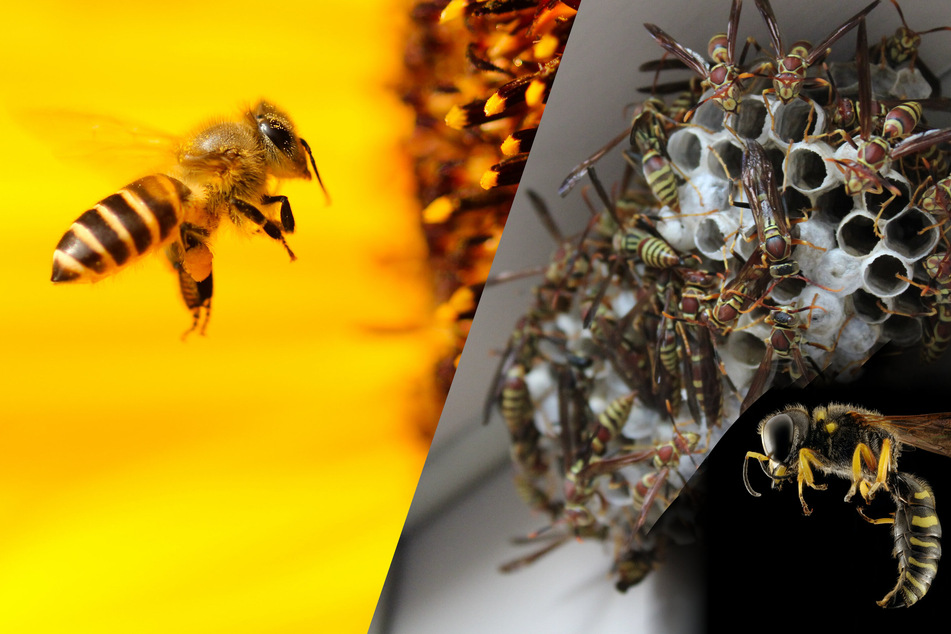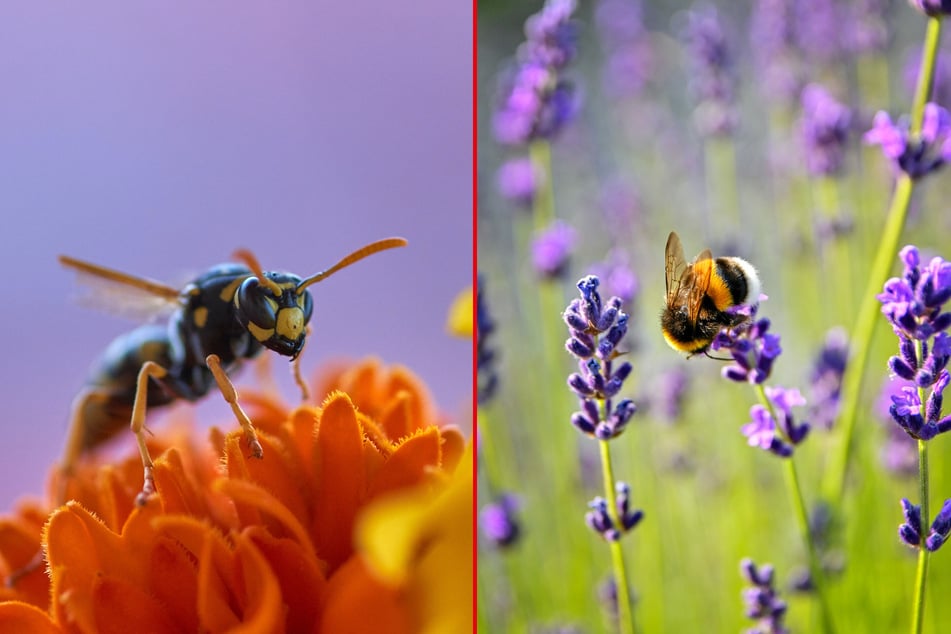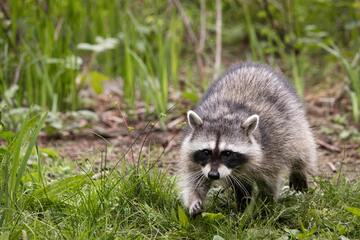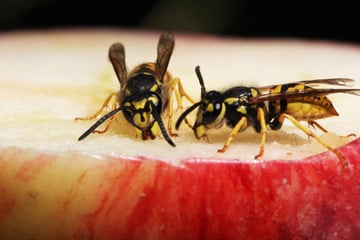Bees vs. wasps: What is the difference between a bee and a wasp?
Bees and wasps are very different insects, even if they both sting and they often have similarly colored stripes. What's the difference between a bee and a wasp, and what are those pesky hornets?

The whistle of a wasp or hornet brings fear to the hearts of most reasonable human beings, but the buzz of a bee brings something rather different. Why is that, do you think? They can all sting you, they can all get a bit aggressive, and they're all insects, so what makes the wasp and the hornet so terrifying?
In this animal guide, TAG24 will dive into the true difference between a bee and a wasp. We will compare bees vs. wasps vs hornets, and will take a look at what makes a wasp or hornet sting so nasty. Let's take a look...
Bees vs wasps vs hornets
Bees, wasps, and hornets are all similarly colored flying insects that feature a prominent stinger and are feared by children everywhere. The key differences are quite major, though, so it's worth taking the time to truly understand what makes a wasp tick, what makes a bee buzz, and what makes a hornet horrible.
Important: Many people are severely allergic to the stings of all three of these flying fiends. It is a good idea to have yourself checked out for allergies relating to bee, wasp, and hornet stings. They all have the potential to bring on anaphylaxis.
What is a bee?
Bees are small winged insects that are vital for global ecosystems due to their important role in the pollination of plants. Famous for producing honey through the collection of nectar and pollen, the proteins of which they feed to their larvae, this process of collecting and depositing pollen is incredibly important in the fertilizing of hundreds of thousands of worldwide plants.
The only continent on which the humble bee does not preside is Antarctica, meaning that no matter where you are, you will likely find bees. They feature a stinger, similar to wasps and hornets, but with a world-famous catch: If they sting you, they die. As a result, bees are not aggressive animals and will only attack if they feel that their hive, queen, or larvae are in danger.
What is a wasp?
Wasps are similar to bees in that they have a yellow-striped coat, a stinger, and are small flying insects. They construct nests out of a paper substance they form through the collection of wood pulp, inside which they raise their larvae. Instead of plant-based proteins, wasps are hunters and will bring other insects to their larvae as food.
Also found on most continents, wasps are far more aggressive and nasty than bees, with a longer and narrower body and a stinger that can attack as many times as it wants. As predators, wasps have a natural inclination towards hostility, making them incredibly aggressive when they feel threatened, and way more dangerous than bees.
What is a hornet?
Hornets are a particularly large variant of wasps, and their closest relatives are yellow jackets. They are absolutely huge, sometimes reaching as large as 2–3 inches in length. Extremely aggressive, these big flying pests will guard their nests and can be genuinely dangerous to people, as they release an attack pheromone that attracts other hornets in the area.

What is the difference between a wasp and a bee?
The key difference between a wasp and a bee is in their ecological function: bees pollinate plants through the spreading of nectar and pollen, while wasps purely serve to protect and continue their species. As such, bees are far more focused on finding the right flowers and plants to collect their pollen, while wasps actively hunt for other insects, protein, and sugar.
To aid in the collection of pollen, bees are generally covered in a (frankly quite adorable) coat of hair, giving them a somewhat fluffy look. As they grow their hive and society, bees will build progressively larger nests over time, some lasting for many years and housing hundreds of bee generations. Wasps make a paper-like hive, while bees make theirs out of wax they secrete from glands on their bodies.
Difference between a bee sting and a wasp sting
Not the most important, but possibly the most notable difference between a bee and a wasp is that when a bee stings something, it rips part of its abdomen out and will die afterward, while wasps can sting repeatedly. As a result, if you threaten a bee, it will sting you once and then will die, but a wasp will sting you over and over again.
Wasps and hornets both secret pheromones as well, which will attract others nearby to come and help them. If you have ever noticed that more wasps will arrive after you have killed one, this is why. As a result, while it is OK to leave a beehive alone, a wasp nest should be removed as soon as possible for safety reasons.
Bees, hornets, and wasps are all very different insects!
They might all look relatively similar, but wasps and hornets are incredibly different to the humble bumblebee. While wasps and hornets are pretty similar critters (after all, they are more-or-less the same), hornets are possibly the scariest bug you could come across. They are truly nasty and truly monstrous.
If you see a bee, celebrate the bee! If you see a wasp, check for nests! And if you see a hornet, try to stay as far away as possible!
Cover photo: Boris Smokrovic / Unsplash (Left) & Bee Safe / Unsplash (Right) & USGS / Unsplash & TAG24 Edit



